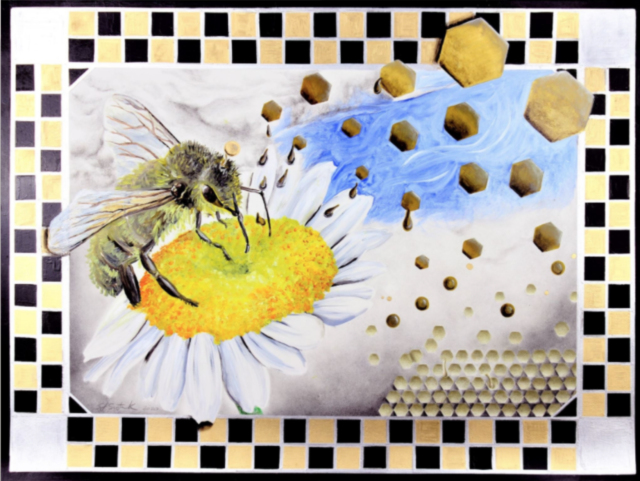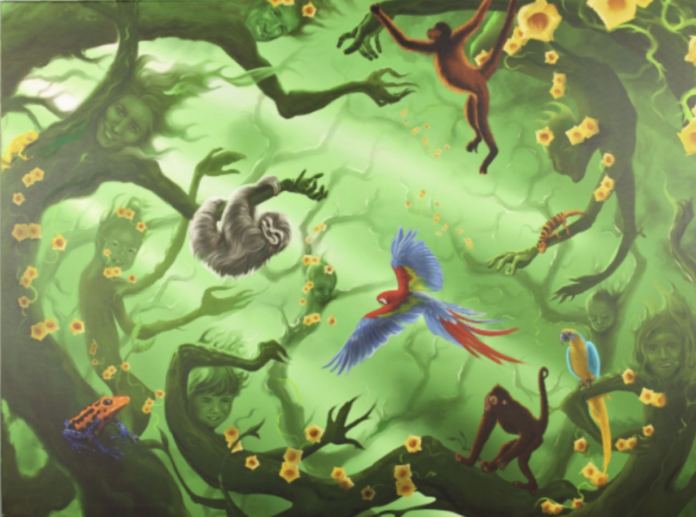By Lucy Ruscitto | Staff Writer
The 4th Annual Climate Crisis Art Exhibit is taking place through October 30 in virtual galleries with pieces from both adults and students from the greater Waco area. This year, 85 pieces were submitted from about 72 artists.
Dr. Alan Northcutt, director of Waco Friends of the Climate and curator of the Annual Climate Crisis Art Exhibit, said the event is typically held at the Waco Winery Rooftop and Patio, which has been used for this event in the last two years. In light of the pandemic, the format needed to be switched to online.
Art will be displayed in gallery A, hosting adult work, and gallery B, featuring student art from pre-K through college. To view the art, those interested can visit their website, and can choose from both galleries to vote on one overall top choice piece for the people’s choice award. Mediums submitted by artists range from oil paints on canvas to sculpture to beadwork to watercolors and more.
“We do judging first, second and third place for adult and for student and a people’s choice award from online voting on the gallery for a total of seven awards typically. In light of the gallery size this year, we may add additional awards,” Northcutt said. “For the judged awards, the judging team consists of one professional artist and members of Waco Friends of the Climate with scientific backgrounds. The judging criteria are relevance to the climate crisis and artistic excellence.”
Susan L. Sistrunk, artist and McLennan County College adjunct professor, is a third-year participant in the Annual Climate Crisis Exhibit. She decided to participate after learning the exhibit would be moved online due to the pandemic. For this year’s submission piece titled “The Last Great Defender,” Sistrunk used graphite and oil paint to create a mixed media technique.
“It was a piece to illustrate the danger bees and other pollinators face due to the use of pesticides such as neonicotinoids and how the demise of the bee population will influence climate change,” Sistrunk said. “Without a vast amount of pollinators, greenhouse gas emissions will only rise.”

Sistrunk said she is passionate about climate change because it involves our entire world and species.
“If this exhibition raises awareness in any way, it is important to participate and help draw attention to the matter,” Sistrunk said.
Adrian Northcutt, son of Alan Northcutt, is the technical assistant at the 4th Annual Climate Crisis Exhibit. He and his father run the exhibit together, and Adrian Northcutt is in charge of setting up the website and putting up the art on the virtual gallery.
“I’ve always taken part in activist activities with my dad ever since I’ve been young,” Adrian Northcutt said. “For the art show, I was able to tackle the more I technical tasks because I have experience with website design.”
Adrian Northcutt said his passion for the environment assists in his work.
“If things continue and future generations will not be able to snorkel in the coral reefs I snorkeled in, enjoy the same coastlines I enjoyed, or be forced to relocate due to sea-level rise, how can I just stand by and let that happen?” he said.
With the move to adjust to the COVID-19 conditions, Alan Northcutt said that there are definitely pros and cons.
“The advantages are that more people will see the show, and viewers from all over the world will have access to the exhibit. Also, the show can accommodate more entries and artists will have access to more buyers,” he said. “The disadvantage is that some of the immediacy of the art is lost, and it’s not possible to study the texture and finest details. Also, sculpture is best appreciated in person.”
Sistrunk said she too recognizes the benefits and downsides to hosting an online gallery.
“The role of an artist this year involves spreading the information more online and seeking out feedback from viewers. This year is different, but I have noticed a positive change with the exhibition being online and hope the virtual gallery may be continued next year even after we are able to have a physical event,” she said. “The online aspect allows the exhibition to reach a larger audience, which is wonderful.”
Overall, Sistrunk said she hopes the exhibit’s audiences can gain a true understanding for the concept and problem of climate change.
“I hope the community will realize what an important topic this is and have meaningful discussions about climate change,” Sistrunk said. “If a larger number of people gain awareness and want to get involved with more climate-based events, that would be a positive outcome.”






